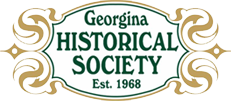Click to Download the PDF
Download the Word Doc
President’s Message
Welcome to the second newsletter of 2025. We’re now in the depths of the winter, and this one is just like the good ol’ days, with lots of snow, ice and cold. Lake Simcoe is frozen right across now, and the Jackson’s Point harbour is buzzing with activity. It is wonderful to see the fish hut operators head out in the pre-dawn to the fishing grounds about three miles out. And the Georgina Historical Society continues to explore Georgina’s rich history. Our annual January “Bring and Brag” general meeting, held at the Georgina Centre for Arts and Culture on a very cold evening, was a great time. We had artifacts ranging from pre-historic stone tools to a 1700’s pewter plate. I always enjoy listening to the presenters describe their items, and I want to thank all who participated.
Our discussions with the Town of Georgina continue as plans are laid for the 50th anniversary of the Village Museum. Grand opening day for 2025 will be May 31, and your society will be taking part in that event. Please mark that date on your calendar, as we want the Village to shine. We’ll discuss details at the next general meeting on February 18, at the Art Gallery on High Street in Sutton. Speaking of that meeting, I am excited to welcome Andrew Sibbald, who will be reading from his new book, Briars Between, for us. I hope to see you all there.
We also continue to work with Courtney Rennie at the Town of Georgina as the signage for the Mann Cemetery comes together, and a trip to see the work that has been done at the cemetery, located on the Queensway in Keswick, is well worth it. That’s about it from me for this month’s newsletter, I hope that this finds you well.
Bye for now, Paul
Bring and Brag – 2025
The following images show some of the many articles and artifacts shared by our members at our recent ‘Bring and Brag’ meeting at the Georgina Centre for Arts and Culture. Every item had an interesting story behind it that was shared to everyone present.
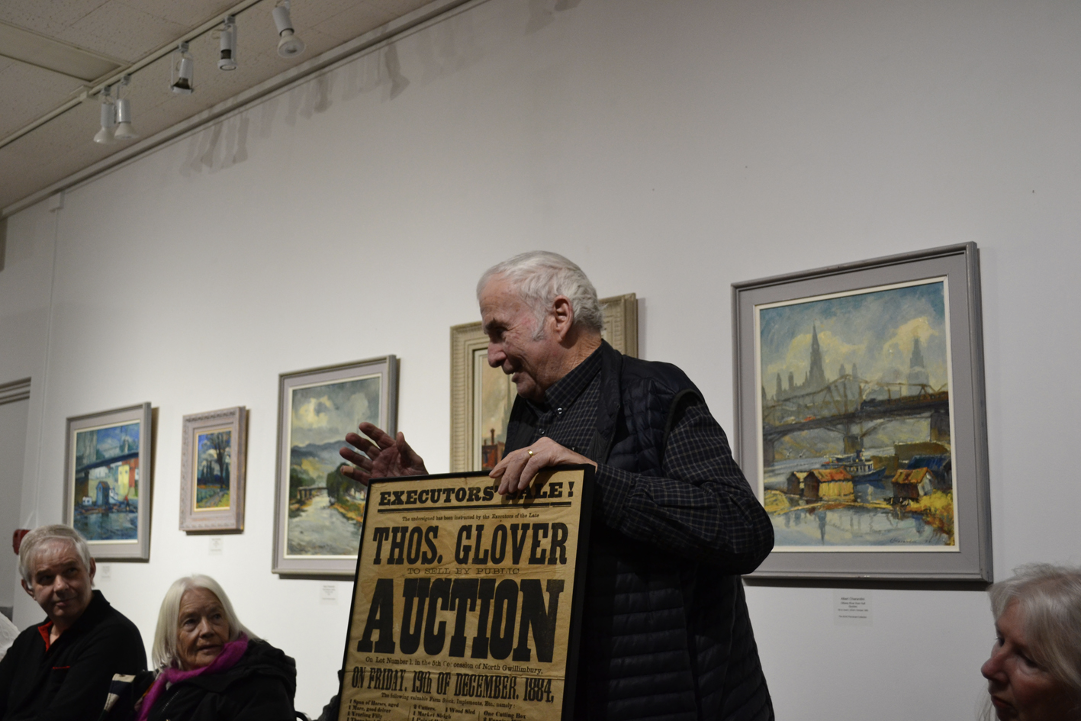
Our Past President, Tom Glover, shares a nineteenth century poster of an estate auction for one of his early ancestors.
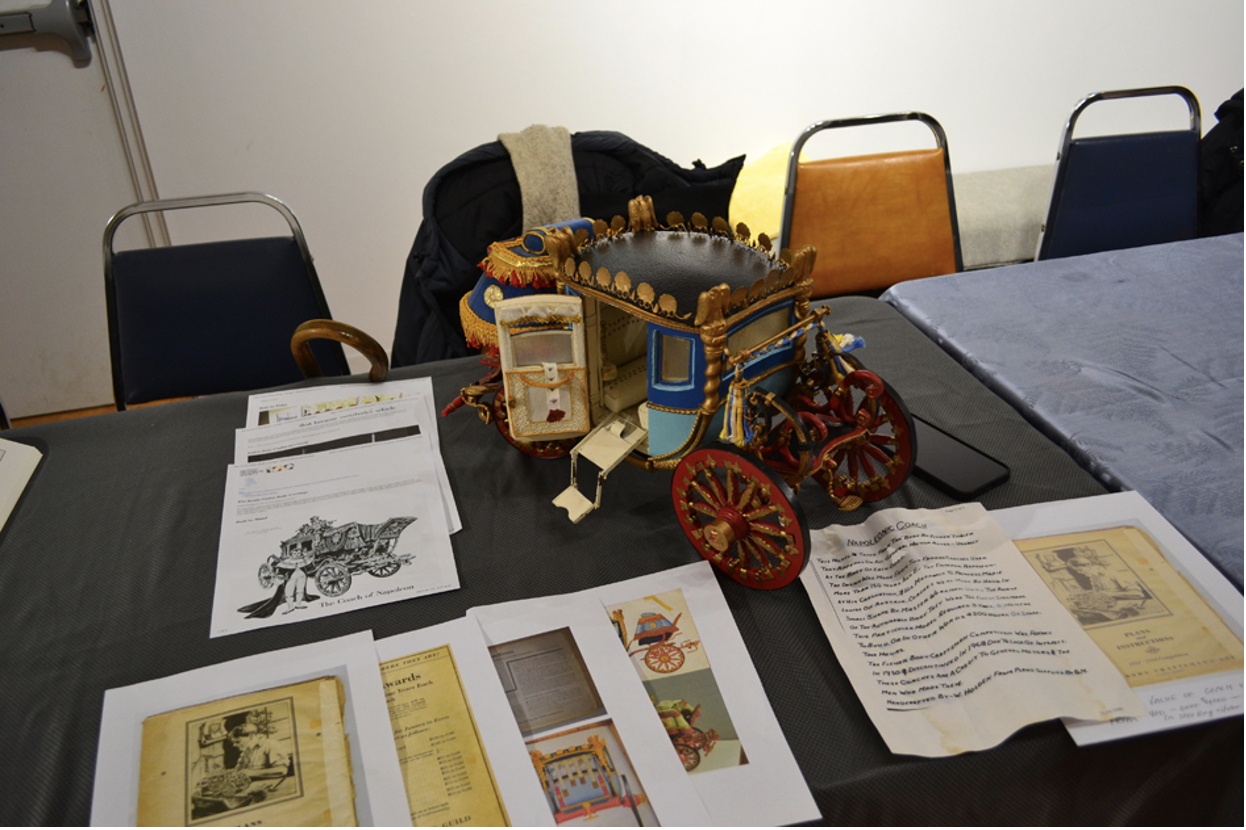
From 1930 to 1968 the Body by Fisher Division of General Motors sponsored competitions to construct a detailed model of a Napoleonic Coach, their trade mark, which was posted inside their vehicles. Prizes were university tuition for the five top competitors. The coach in the image was made by Bob Holden’s father, William Holden, shortly after the competition was discontinued. It took him 4200 hours to complete over a period of three and a half years.
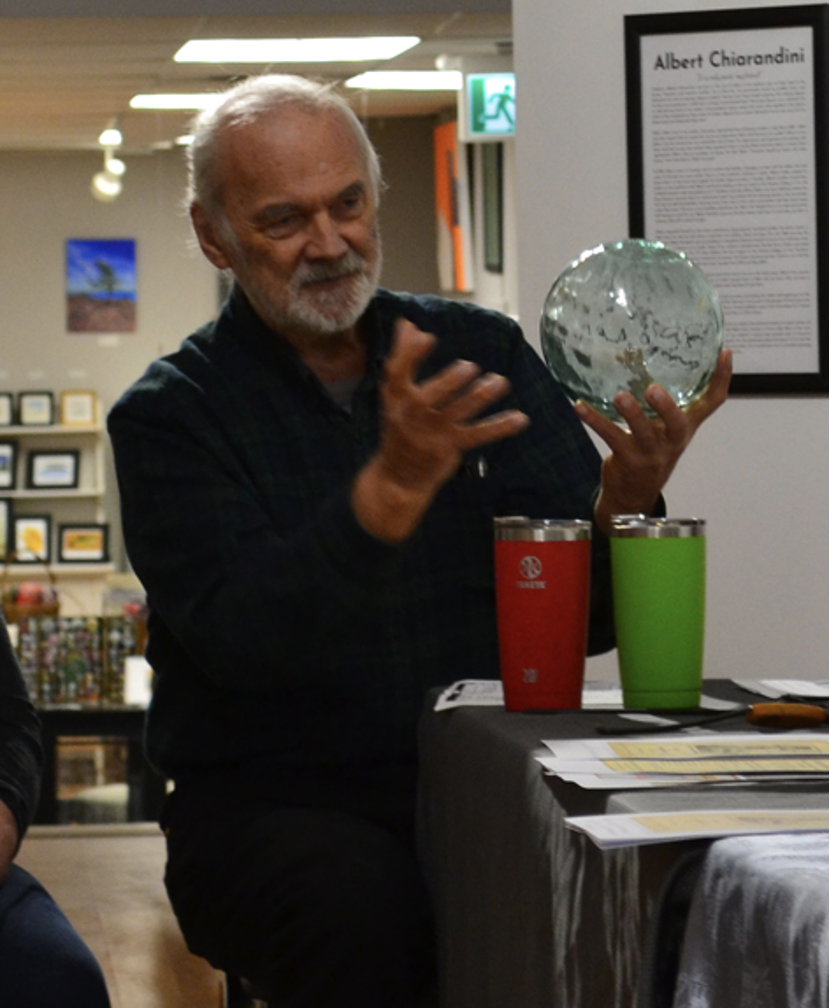
An antique glass fishing float is held for everyone to see by Mati Hobe.
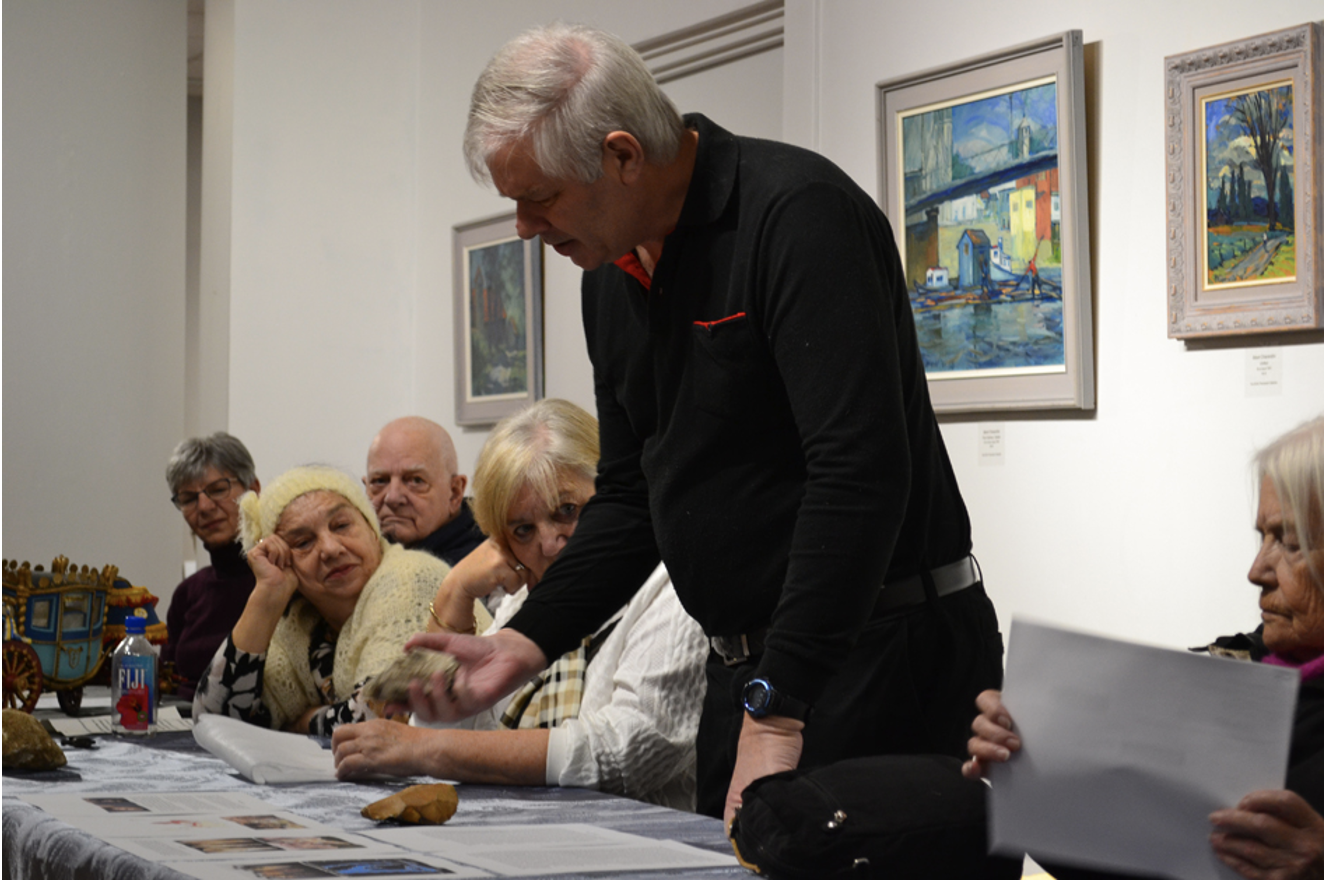
Martin Nicolai holds a sharp edged cutting tool made of flint used by pre-historical man that he’d found in France.
Saved From The Recycle Bin!
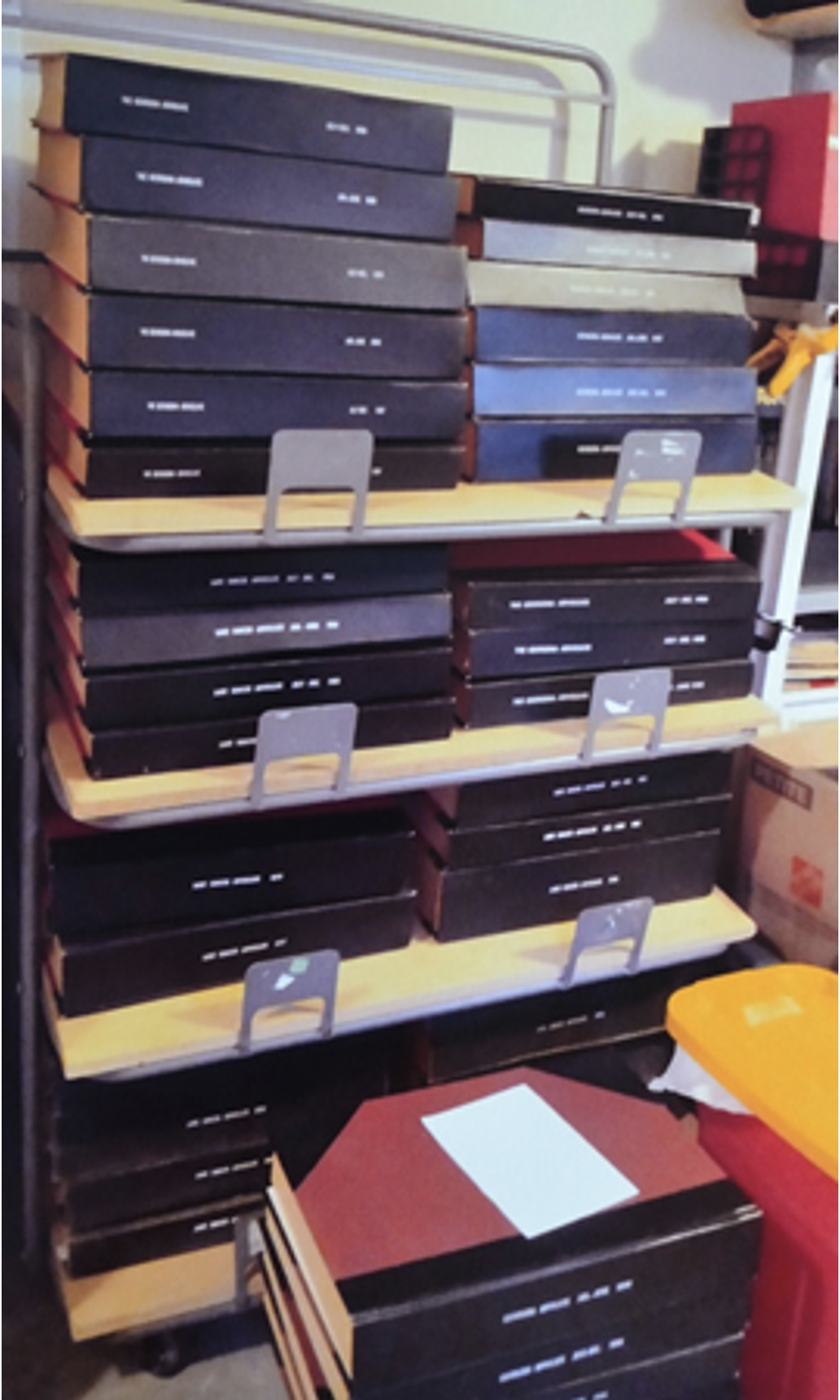
Left is a picture of rare bound volumes of original Georgina Advocate newspapers recently held by the Georgina Public Library. Precious few issues of them are still in existence and these originals were still in excellent condition and should have been held for reference and research. Instead, they were consigned to the recycle bin. Fortunately, they were rescued by some quick thinking (and possibly divine intervention) by an alert worker who brought them to the attention of your President, Paul Brady. How the decision to recycle these important documents was made is a question that needs to be answered. Where was the oversight in this decision? Was the Library Board informed or even aware of this? These volumes now belong to the Georgina Historical Society and will be added into our archive collection.
Valentine’s Day
While browsing the internet I found the following article written by an indigenous Canadian on the origins of Valentine’s Day, its meaning, and message of love for everyone. With all the turmoil in today’s world, it seemed appropriate to include it in our February issue. Ed. By Xavier Kataquapit

We recently celebrated Valentine’s Day with wishes for those we are romantically interested in or in general for good greetings to family and friends. However, the history of this day, which is celebrated annually on Feb. 14, is very different.
Everyone grows up with the annual traditions their parents followed without question. It is stranger, however, to follow long-standing European traditions when you come from an Indigenous background. We simply followed traditions like Valentine’s Day like the rest of the Canada because we were told so and no one ever wondered why. Early on it was viewed as a Christian holy day but over the past few generations it seems to have lost its Christian significance. My parents were born in the James Bay wilderness and they followed a traditional lifestyle based on the changes of the seasons.
The most important times for us were based on when the waterways froze, when the ice broke free to open the waters and other times were marked for when a bird species arrived, or the arrival of fish or the migrations of caribou herds. The days we commemorated had to with our survival but when Christian missionaries began imposing their religion upon us, we started commemorating holy days like Valentine’s Day.
I was surprised to learn many of the Christian holidays we celebrated actually originated as pagan days of worship. Valentine’s Day is steeped in pagan history and full of controversy and tragic violence. There is some evidence this day was made to replace the pagan celebration of Lupercalia, which had to do with celebrating fertility. Valentine’s Day became a day of sharing loving greetings in the Middle Ages and the fact that it came out of pagan fertility celebrations makes sense.
In the 1700s and 1800s, the celebration of Valentine’s Day took off and people began sharing letters of romantic greetings and then printed cards with those they cared about. The common accepted Christian tradition is the holiday commemorates the martyrdom of
Saint Valentine in the year 269. However, like many medieval Christian traditions, there are many stories, histories, legends, and myths about the identity of Saint Valentine. He is often identified as a leading figure in Rome or as someone with the same name in Terni, Italy, while relics of his body, his remains or his items can be found in Rome, Terni, Spain, Ireland, and several cities in Eastern Europe. No one is sure who exactly Saint Valentine was, but many identify him as a Christian figure who worked to free other Christian people and ended up being imprisoned himself for his actions. One thing for sure is Saint Valentine was a symbol of opposing the Roman Empire and pagan beliefs.
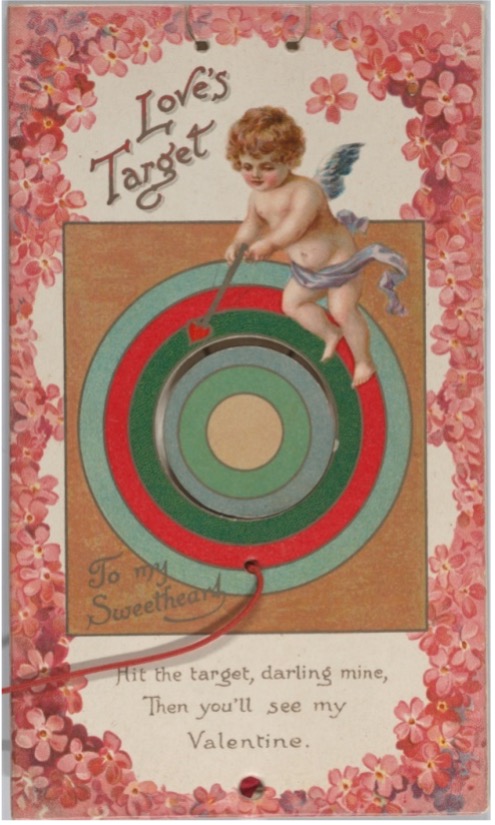
Even with all the Christian history, pagan symbolism is still prevalent in this holiday. The image of Cupid as a cute naked being shooting arrows of love is connected to pagan rituals and Greek mythology. He started out as a slender youth named Eros who was featured as shooting arrows of love to cause romance to flourish. Later in history he became the cute little creature we know today as Cupid.
Valentine’s Day is steeped in mystery, intrigue and violence, which gives us reason to pause and consider what it all means. The fact is no matter the history, the main concept of love for others on a special day is still something wonderful.
Of course, it has evolved in our modern world into a money enterprise where there are flowers, drinks, chocolates as well as other gifts associated with this day. I am always happy to get a few chocolates no matter what the reason is so from my point of view that is something wonderful. Love is something we need more of, for sure. We are living in a time of wars that don’t make any sense and are causing widespread death and destruction while making some a lot of money. We are dealing with media propaganda and now Artificial Intelligence that is impacting us in so many ways.
The future of Mother Earth is being threatened by climate change. The military industrial complex is threatening nuclear apocalypse and that is a worry for humanity. We need more love than ever and that means caring more about our planet and all of humanity. We must realize that it is up to us to stand up to fascism, right wing ideologies and the very wealthy who continue to make money on war, death, and destruction. Love is a very pure and powerful force that we need to tap into.
I may not identify with many ancient European traditions, but love is an idea I can understand. Love can change everything.
Sources: https://www.northernnews.ca/news/valentines-day-and-the-power-of-love
https://www.pictureboxblue.com/wp-content/uploads/2023/12/Loves-Taraget-.jpg
Where in Georgina?
Our previous mystery location was identified correctly by our President Paul Brady. Thanks Paul! It’s finally solved…it was the Orchard Beach General Store! We have a new mystery location above that still remains unidentified …where is it, and what is it?
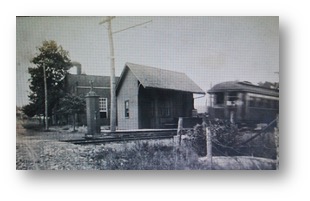
Pioneer Winter Pleasures
By Bob Holden
Winter was a time when the onerous outdoor work of spring, summer and fall was finished; only chores associated with inside activities were actively pursued. There was more time for simple pleasures and sports by pioneers as a diversion from the confinement often imposed on them by the harsh snows and winds of a long cold winter.
Visiting was always a popular diversion among most people in Upper Canada; more formal calls were made by the social set in town, while mostly informal visits took place in rural districts. Births, marriages and deaths provided excellent reason for visitations, and it was usual to provide guests with food, and frequently with lodging as well. It is said that farmers thought it “nothing extraordinary to make an excursion of six or seven hundred miles in the winter in their sleighs to see their friends”. (1) Travels were easier in winter as road conditions became much better once the ground became frozen.

Sugar-making was often thought by pioneers as “one of the most laborious processes which the early settler had to undertake’’. (2) However, some who were observers instead of participants considered that the work was not usually so laborious, but that “the sugar season is rather deemed one of festivity than toil. There is no doubt, however, that sugar- making was usually a merry time, especially among the young people, for the approaching spring lent a spark of romance to the occasion. Most pioneer children seldom appeared in the sugarbush in the early stages of the process, but later arrived in large numbers, “well-armed with spoons and ladles, when the sugar or syrup was being made.” Sugar-eating bees and other picnic parties were centered around the kettles of the boiling-centre and the depredations by younger set were usually taken good-naturedly by their betters, for, after all, was not this season one of the compensations for the hardships of pioneer life? Thomas Conant stated the “sugaring-off” was one of life’s greatest pleasures: “Reader, if you have not already tried it, don’t fail to make an effort to get to a sugaring-off, and my word for it you will never regret it. … The wax is so sweet, so pure and pleasant, and it’s all so jolly, that such experiences are always red-letter days in one’s life calendar.’’ (3)
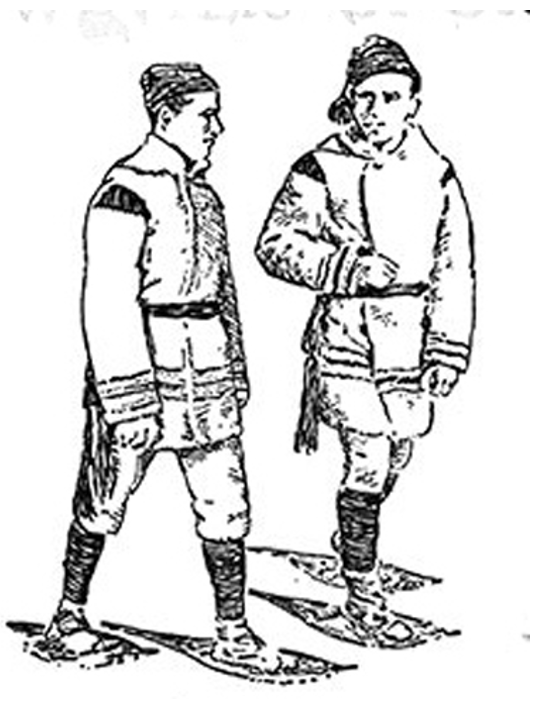
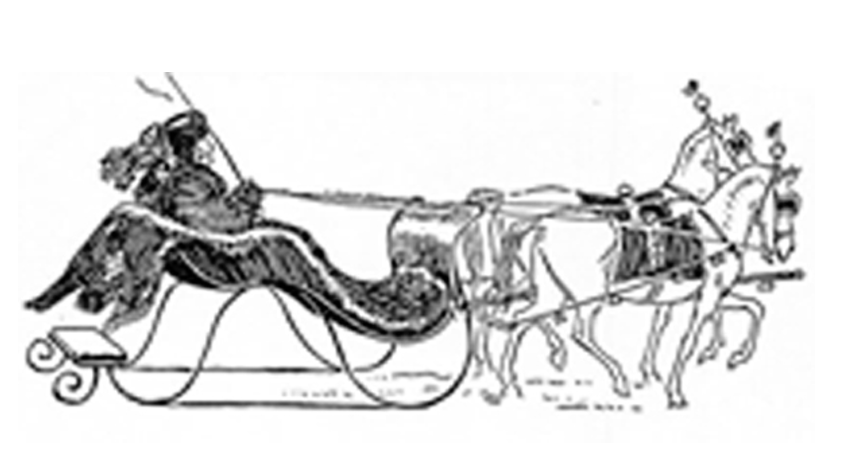

Just as characteristic of Canada were the sports of winter. Snow-shoe and dog-sleds had long been necessary for winter travel over Indian trails and along frozen lakes and rivers, and they were supplemented in the days of settlement by sledge, sleighs, and and carioles. Travel by cariole was just as pleasurable in winter as the canoe was in summer, and it was a time when travelling was seldom pleasant due to their terrible roads. The settler’s sleigh was usually home-made and its body ran very close to the ice; while that of the “gentlemen” in the towns had runners, and was often a very elaborate affair. The cariole had no covering, so travellers were well bundled up in furs. Sleighing-parties became a characteristic of Canadian winters.
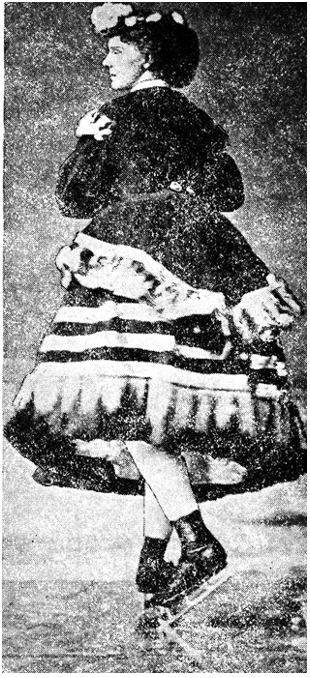
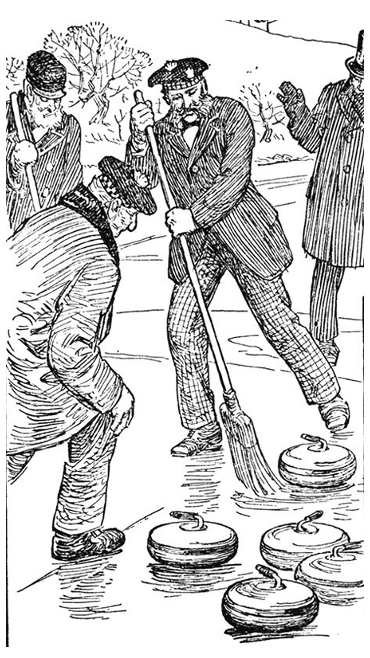
Tobogganing, or, as sometimes spelled, “traboggining”, was another winter sport early enjoyed by the young people. Skating, which originated in Holland, was also a favourite amusement, though it was frequently considered improper for girls to participate in such a form of pleasurable exercise. Curling commenced in Canada towards the close of the eighteenth century, when some officers of the garrison at Quebec became interested in the game as a means of relieving a monotonous life. In Upper Canada the game was first played at Kingston about 1820, and on the Don River at York nine years later; soon afterwards it was popular in many another settlement, particularly where the Scotch predominated. In this sport, as in many another activity, the rural settler frequently walked many miles to join his brethren in the nearest village, and all gathered at a favourite stretch of ice on river or lake.
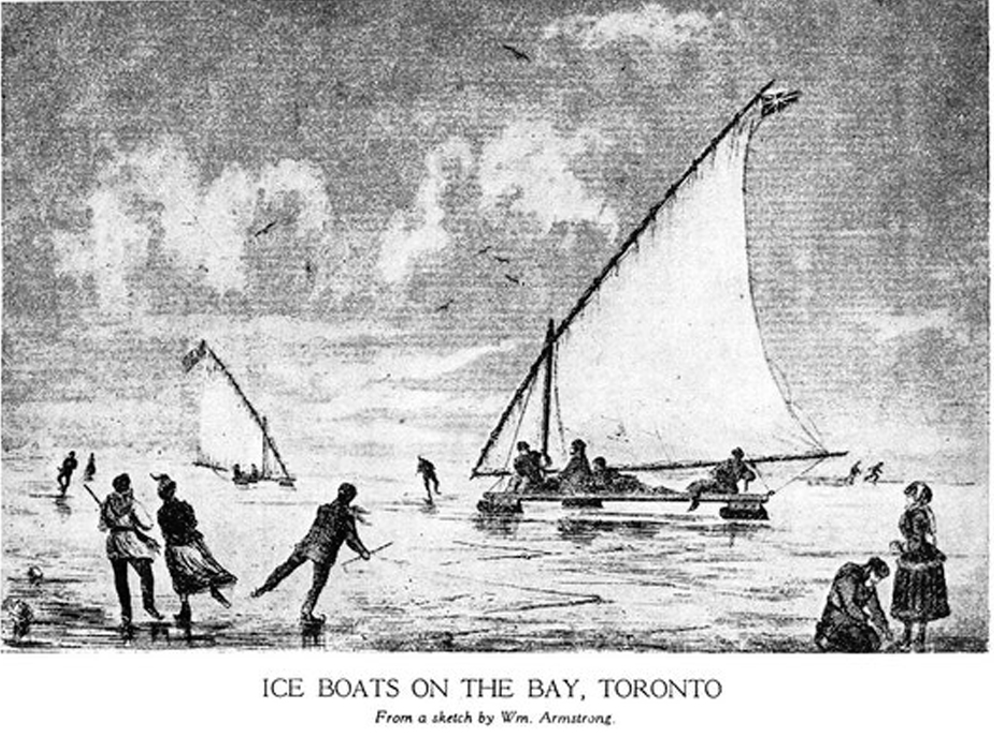
On the many lakes and larger rivers, ice boating was a popular past-time as well. Many of these winter pleasures would be capped off afterwards by a social time that often included hot toddies, hot buttered rum and other beverages and food.
Sources:
- J, Bouchette: The British Dominions in North America, 1851. Vol. I,
- J. Bouchette, The British Dominions in North America, 1851, Vol. I, p. 371.
- Thomas Conant: Life in Canada. 1938. p. 128.
- C. Guillet; Early Life in Upper Canada, Ontario Publishing, Toronto 1933 pp.305-306
Images from https://www.cwjefferys.ca/ the picture gallery of Canadian history vol 2 & 3
News
The Pioneer Village is undergoing an image refresh for its 50th anniversary celebration on May 31st. The name is to be changed to the Georgina Village Museum to better reflect the work of preserving our past which goes beyond just what the pioneers did. Along with that there are plans to change the loge, the visible symbol of the Village. They have proposed incorporating the schoolhouse into the design. Your Board feels that one of the other buildings would be more appropriate as the schoolhouse is a replica building and all the others are originals that volunteers have helped to restore and our society facilitated their removal from their original locations to establish them into a Village. The Board’s recommendation to the Town is that we feel the Noble House would be more appropriate due to its location and more commanding appearance.
We have not seen any written description about the Mann Cemetery. Courtney Rennie of the Town will be contacted by Paul Brady regarding a review of a draft of the proposed signage wording to ensure the information on the draft is correct. As we are covering signage costs, we need to approve this before paying for it.
Your Board is actively engaged with the Town of Georgina in the planning for the 50th anniversary celebrations for the establishment of our Village. If you have any ideas or contributions that you think should be appropriate for this occasion, contact any of your Board members so we can bring them to the table for our discussions.
Events
Tuesday, February 18 – General Meeting at Georgina Centre for Arts and Culture on High Street in Sutton. Andrew Sibbald will be our speaker and promote his new book. 6:30 meet & greet, meeting will start at 7:00.
Monday, March 3 – Board Meeting at the schoolhouse 1:30
Tuesday, March18 – General Meeting at the schoolhouse Georgina Village Museum; meet and greet 6:30 meeting at 7:00. Melissa Matt will give a presentation on St. Anthony’s Church in Virginia. St. Anthony’s Roman Catholic Church was built to cater to the numerous French-Canadian and Irish settlers who entered the township in the 1820s. Many were laid to rest in the cemetery there, but no stone marks their grave. Melissa will speak about the early history of the church, the cemetery and the people who are buried there.
Monday, April 7 – Board Meeting at the schoolhouse 1:30
Tuesday, April 22 – Rob Grossi will share stories at the schoolhouse Georgina Village Museum. Meet & greet 6:30, meeying at 7:00
Saturday, May 31st – Kick off of the 50th anniversary celebrations and rebranding of the Georgina Village Museum.
